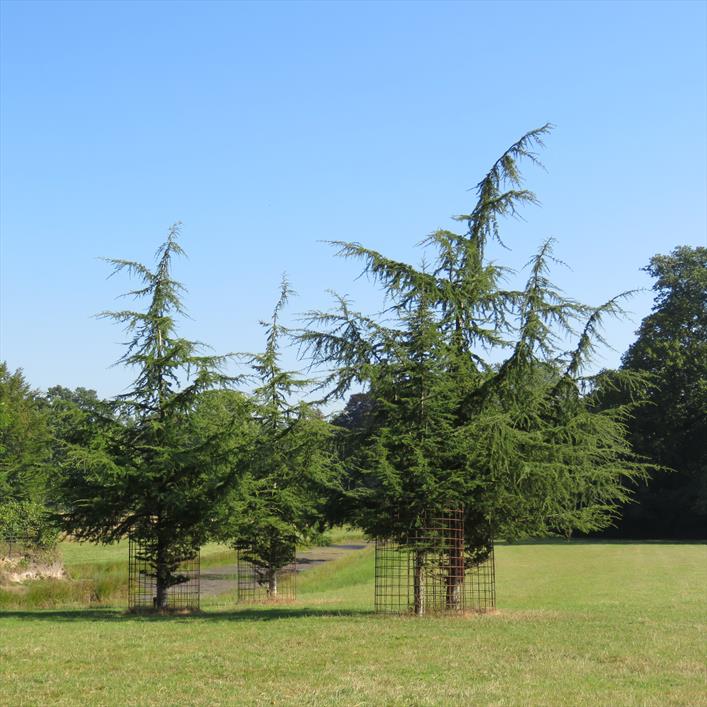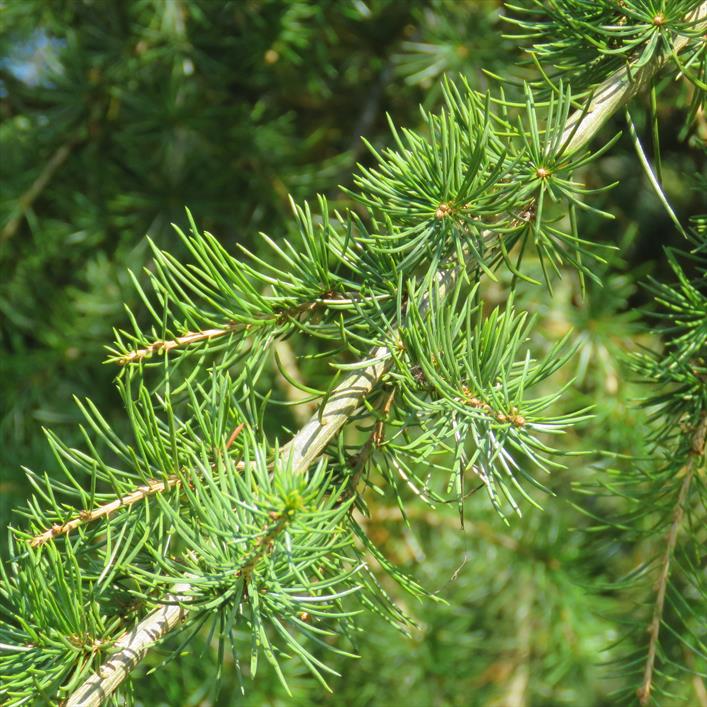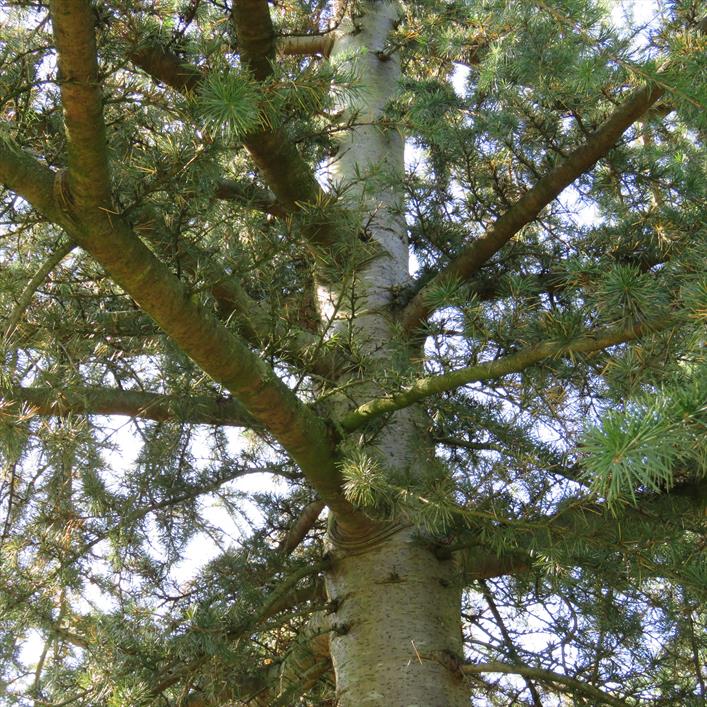Atlas Cedar
Cedrus atlantica
Pine familiy (Pinaceae)
The royal tree from Morocco
Just as its name suggests this tall cedar originates from the Atlas Mountains of Morocco. In the Old Testament the cedar was described as a symbol of beauty, youth and power, and regarded as a royal tree. An essential oil is extracted from the wood, which is effective against various health problems. Nowadays it is often planted as an ornamental in parks. The bluish-green needles are 1 to 2 cm long and sit together in clusters of about 40 needles. The tree bears both male and female cones. Female cones are erect and barrel-shaped with a recess at the top. After two years they have matured to a pale, purplish brown colour and are 5 to 8 cm long. The scales fall off and release the winged seeds.
Read more.... »Themes
Crown jewel on the Twickel Estate.
An essential oil obtained from the branches is used in the perfume industry, notably in jasmine-scented soaps.
There are claims for many medical uses of the essential oil such as an astringent, diuretic, expectorant and sedative.
Since ancient times, the timber of the Atlas cedar has been used for building ships, palaces and temples. It has been heavily exploited for many centuries also for the oils in the wood and leaves.
Cedrus atlantica is the tree that is mentioned the most number of times in the bible.
Details
| Description: | Conifer, up to 40 m. |
|---|---|
| Distributions: | North africa - morroco and algeria |
| Habitat: | Forests on mountain slopes between 1300 - 2600 m altitude. |
| Year cycle: | Perennial (polycarpic evergreen) |
| Hardiness: | -4 - 5 f (hardy - very cold winter) |
| Flowering period: | September |
| Flower color: | Grey, yellow, green, purple |
| Notes on flowers: | The male catkins are greyish-green with a purplish bloom, releasing bright yellow pollen in autumn; female inflorescences are small, greenish, upright cones. |
| Fruiting period: | Oktober - december |



